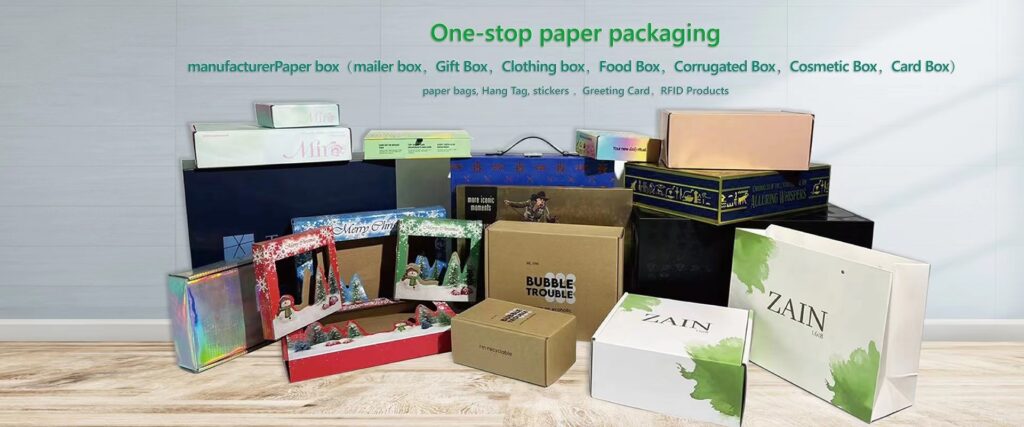
In today’s ever-evolving world, the custom packaging boxes industry is at the forefront of change, embracing cutting-edge technology and a heightened focus on sustainability to redefine the customer experience. These innovations are reshaping not only how we package products but also how customers perceive and engage with brands. With these breakthroughs, customers can relish a holistic shopping experience, receiving their purchases in eco-conscious, artistically crafted, and premium-quality custom packaging. These advancements are not only ensuring the safe transportation of goods but also nurturing a deeper connection with consumers on mental, sensory, and emotional levels.
In this article, we delve into ten innovations that are currently redefining custom packaging boxes.
Table of Contents
1. Sustainability: The Sustainability Shift
The sustainable packaging revolution stands as a paramount innovation that is revolutionizing the packaging industry. Recent surveys reveal that 77% of consumers prefer their products to be packaged in sustainable materials. This has prompted numerous companies to make the shift toward sustainable packaging, recognizing its appeal to environmentally-conscious consumers. Furthermore, a survey by Survey Monkey has found that one in three customers is actively seeking eco-friendly packaging, with 35% of respondents stating their willingness to pay slightly more for products packaged in eco-friendly materials. As sustainability continues to gain momentum, trends like reducing the carbon footprint, minimizing waste, and fostering recycling have become increasingly popular.
2. Edible Packaging: Sustainability Takes a Tasty Turn
Edible alternatives have emerged as a groundbreaking innovation in the packaging sector. These edible alternatives serve a dual purpose, reducing our dependence on fossil fuels while also presenting an eco-friendly packaging solution. Natural materials such as plant fibers, crops, seaweed, and algae are harnessed to create these edible custom packaging solutions. Moreover, they are not limited to human consumption; they are also suitable for animals.
3. Space-Saving and Flexible Packaging: Efficiency in Transit and Storage
Innovations in packaging are not solely about sustainability and recyclability. They also encompass the domains of transportation and storage. Excessive transportation, mass production, and the storage of custom packagingmaterials can have a detrimental impact on the environment. However, recent innovations in space-saving solutions have provided an avenue to counter these challenges. The rise of flexible packaging, characterized by lightweight and durable materials with precise sizing and types, is reshaping the packaging landscape.
4. Smart Tech Packaging: A New Age of Interactivity
Beyond edible and flexible packaging, the packaging industry has been taken aback by advances in smart technology. Smart packaging, also known as active or intelligent packaging, has rapidly evolved in recent years. According to research by Grand View Research, the revenue generated from smart packaging reached $10.8 billion in 2015 and is projected to grow to $26.7 billion by 2024. Smart packaging ushers in a new era for brands, providing the opportunity to conveniently track and record customer behavior, thus offering a more immersive and engaging experience. These technological advancements are enhancing product engagement and driving productivity.
5. Material Trends: A Diverse Material Palette
Material innovation stands as a pivotal force driving transformation within the packaging industry. Materials like plant fibers, bamboo, scratch-resistant components, and edible alternatives have spurred a material revolution. Furthermore, corrugated materials have not lost their luster, remaining a trending choice in packaging. Global market data indicates that corrugated materials, valued at $155 billion, are projected to double by 2025.
6. 3D Printing Advancements in Manufacturing: Crafting Complexity
The packaging industry is not only undergoing transformations in materials and design but also in the realm of manufacturing. Manufacturing processes are experiencing a wave of innovation with the advent of advanced technology and discoveries. 3D printing, in particular, has taken center stage, enabling the creation of exquisitely designed custom packaging boxes. This technology allows for the printing of packaging with enhanced flexibility, efficiency, and cost-effectiveness.
7. AI & Machine Automation in Custom Packaging Boxes: Elevating Efficiency
The role of technology extends beyond the confines of custom packaging boxes, reaching into the domain of efficient product delivery. Customers increasingly demand top-quality packaging with quick turnaround times. To meet these expectations, the integration of robotic process automation and cognitive computing is proving invaluable. As robots begin to perform tasks, they are enhancing productivity and streamlining the fulfillment of bulk orders.
8. Automating Deliveries to Consumers: The Age of Automated Logistics
Technological advancements have made the seamless delivery of products to customers a reality. The emergence of delivery methods such as Amazon’s drone deliveries and self-driving Uber vehicles demonstrates the feasibility of automated logistics. Brands are now offering automated deliveries to customers, meeting delivery deadlines effectively. In the packaging industry, many manufacturers have also embraced automated delivery methods to enhance the efficiency of their supply chain.
In Conclusion: A Future Shaped by Innovation
In essence, these technological innovations have ushered in a new era for thecustom packaging industry. From a heightened focus on sustainability to the integration of cutting-edge technology, every facet of the industry has undergone a transformation, benefiting both customers and businesses. These advancements are not only enhancing the delivery of products in sustainable packaging but also fostering environmental preservation and boosting productivity. It is safe to say that technology is the driving force of the future. By embracing these innovations and adapting to the ever-evolving needs of the packaging industry and its consumers, businesses can remain ahead of the curve and continue to thrive in a rapidly changing landscape.
